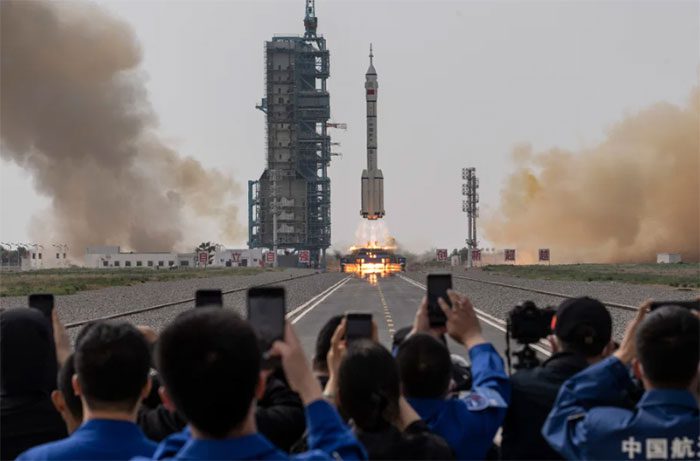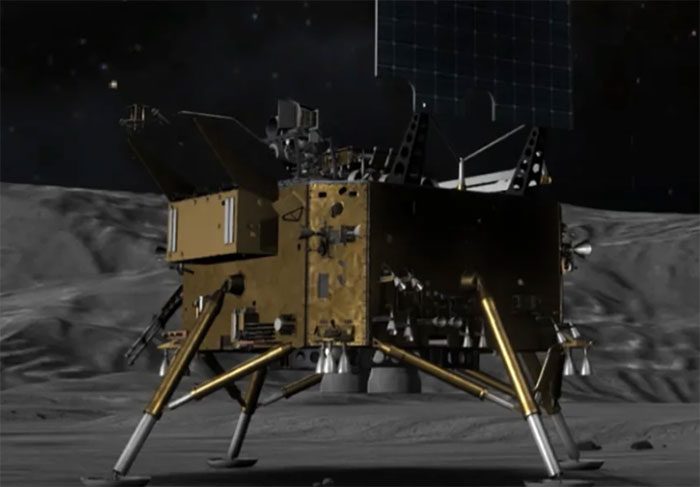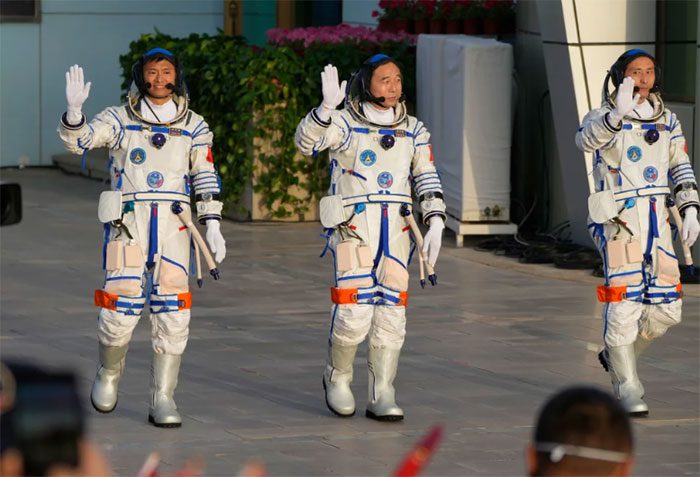Beijing aims to achieve what no nation has accomplished so far in the “Far Side” of the Moon, a region still shrouded in mystery and yet to be explored by humans.
Chinese officials have announced that the upcoming lunar mission is set to bring back the first samples collected from the “Far Side” of the Moon, amid Beijing’s ambitious plans to send astronauts to the Moon this decade and establish an international lunar research station.

Members of the China National Space Administration and visitors watch the Shenzhou 16 spacecraft launch on a Long March 2F rocket at the Jiuquan Satellite Launch Center on May 30, 2023. (Photo: Getty Images)
According to CNN, the China National Space Administration (CNSA) stated in a release that preparations for the Chang’e 6 mission in 2024 are progressing smoothly, adding that the accompanying relay satellite for the mission will be deployed in the first half of next year.
This week, CNSA also mentioned the Chang’e 8 mission scheduled for 2028, with Chinese officials on October 2 calling for increased global collaboration for the unmanned lunar exploration mission at the International Astronautical Congress held in Baku, Azerbaijan.
According to an accompanying document published on the CNSA website, the Chinese expedition in 2028 will welcome “mission-class” joint projects with other nations and international organizations. This means that China and its international partners could collaborate on launching spacecraft and operating orbits, conducting “interactions” between spacecraft, and exploring the lunar surface together.
CNSA noted that the Chinese spacecraft will also allocate space for 200kg of scientific payload from foreign partners. Chinese state media indicated that this could allow partners to conduct lunar research by “piggybacking” on this mission.
China expects both of the aforementioned missions and Chang’e 7, scheduled for 2026, to generate valuable data aimed at building a long-term international research station at the Moon’s South Pole by 2040 – part of Beijing’s broader efforts to become a space power.

An artist’s impression of the Chang’e 8 mission presented at the International Astronautical Congress in Baku, Azerbaijan on October 2. (Photo: CNSA)
The Race to the Moon
Significant efforts in the space program have made China the first country to deploy a probe to the “Far Side” of the Moon in 2019, complete the construction of the Tiangong space station last year, and announce plans to become the second nation to conduct a crewed mission to the Moon by 2030.
Expanding international relations through space cooperation is also part of this plan – although so far, only a few countries are believed to have joined China’s lunar research station initiative. These countries include Russia, Venezuela, and South Africa.
Of course, China is not alone in pushing its space program and lunar ambitions, as many nations have noted the potential scientific benefits, national prestige, and access to resources as well as the deeper space exploration that successful lunar missions could bring.
Last month, India successfully landed the Chandrayaan-3 spacecraft on the Moon, becoming the fourth country to achieve this feat, landing the lander closer to the Moon’s South Pole than any previous spacecraft in history.
That same week, Russia’s first lunar mission in decades ended in failure when the Luna-25 spacecraft crashed into the lunar surface.
The United States has also ramped up its lunar program, launching its first test flight in 2022 under the Artemis program, aiming to return astronauts to the Moon by 2025 and establish a scientific base there.
Like China, the U.S. is also gathering international partners, with over two dozen countries signing the Artemis Accords for “peaceful exploration of outer space.” China and Russia are not among the current signatories.

An artist’s impression of the Chang’e 8 mission presented at the International Astronautical Congress in Baku, Azerbaijan on October 2. (Photo: CNSA).
Chang’e 6 Mission
CNSA stated in a release on September 29 that the Chang’e 6 mission next year will help deepen understanding of the “Far Side” of the Moon, collecting samples there after 10 previous missions to the “Near Side,” the surface facing Earth.
According to Hu Hao, a senior official working on the Chang’e 6 mission, the Chang’e 6 spacecraft is expected to land in the South Pole-Aitken basin on the “Far Side” and collect dust and rock samples.
The “Far Side” of the Moon is the part that cannot be seen from Earth, covered with numerous craters and rugged terrain.
According to CNSA, the Chang’e 6 spacecraft will also carry payloads and satellites from four international partners. These include a device from France to detect radon gas, an ion detector from the European Space Agency, an Italian laser corner cube reflector for radar calibration, and a CubeSat satellite from Pakistan.
This mission is expected to be followed by Chang’e 7 in 2026, aimed at searching for lunar resources at the South Pole, and Chang’e 8 two years later, intended to investigate the use of lunar materials for building facilities there.
According to Space.com, China aims to test 3D-printed bricks made from lunar rock by the end of this decade. This is one of the critical steps toward establishing permanent bases on the Moon.


















































